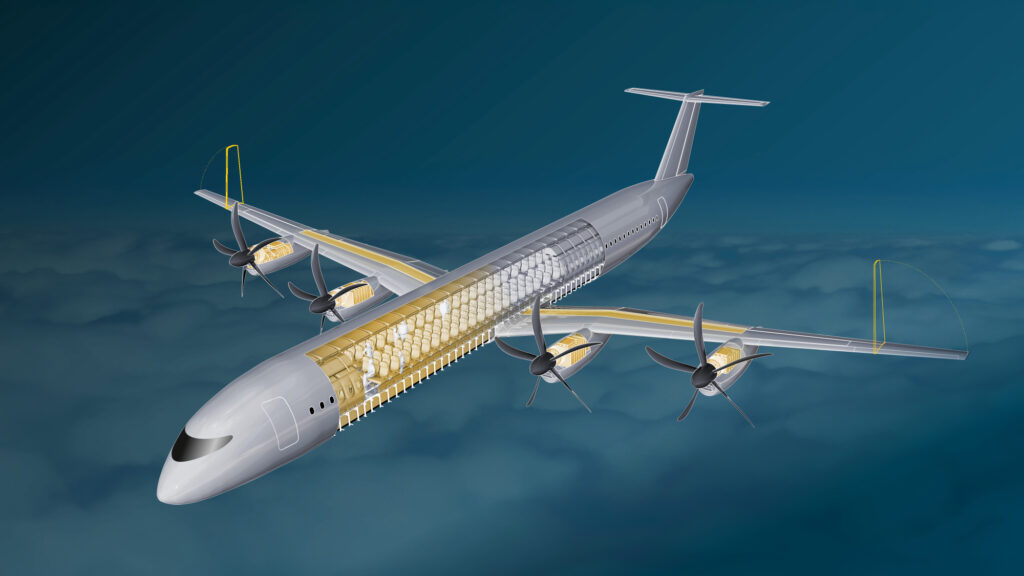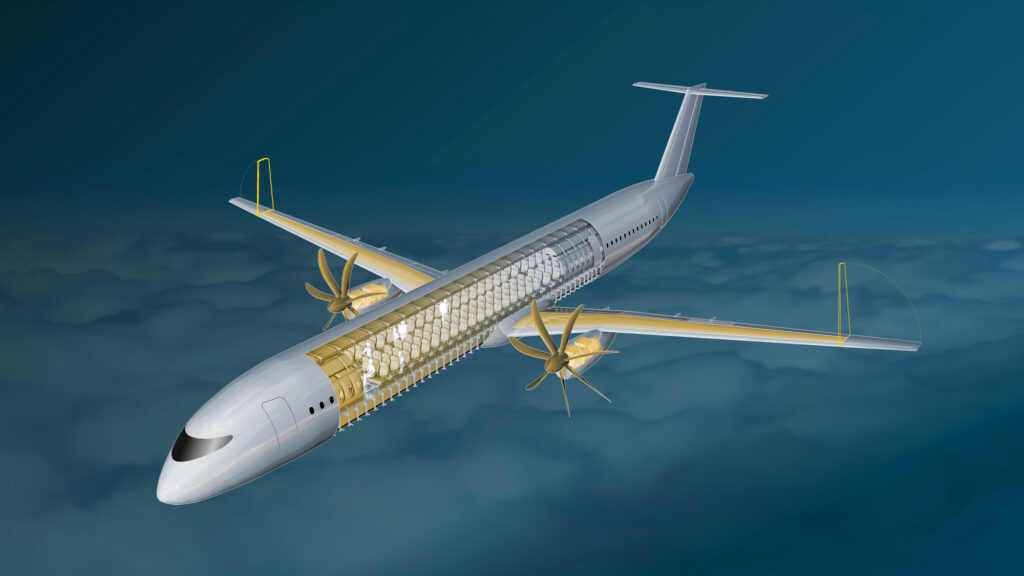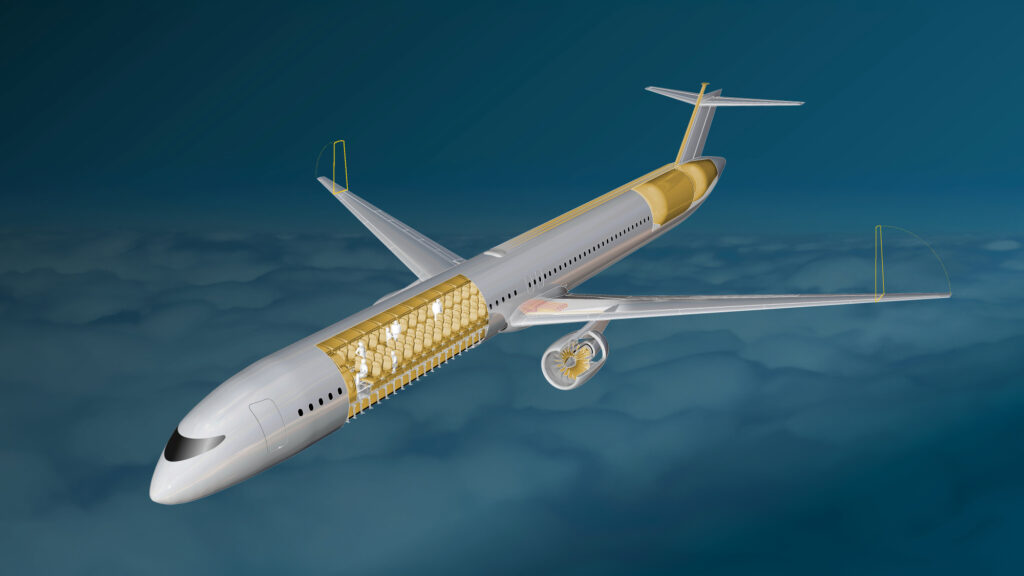The economic and ecological technology assessment is our main focus in EXACT. Within this, we pay attention to the interaction between vehicle, air-transport and energy systems. When we started with EXACT we considered a very wide design space with all possible technologies and their integration into the aircraft. The most promising aircraft concepts are shown below:
Aircraft Concepts
The Plug-In Hybrid Electric Propulsion (PHEP) aircraft can be operated fully-battery-electrical on a range of up to 500 kilometres. It also features one big gas turbine to allow range flexibility for up to 2800 kilometres. This EXACT concept can be economically and ecologically promising for a 250-passenger short-range aircraft with 500 watthours per kilogram (Wh/kg) batteries at cell level. Furthermore, it showed the highest climate impact reduction potential (>70%) if fueled with fossil kerosene compared to today’s most efficient short-medium-range aircraft. For regional applications (70 passengers, 1800-kilometre design range) the concept is even more advantageous due to the very short distances flown in this aircraft class and the increasingly poor efficiency of smaller gas turbines.
The turboprop propulsion aircraft shows significant efficiency improvements compared to the conventional turbofan powered baseline concept for kerosene scenarios. For a mission of 1500 kilometres, more than 20% mission-energy savings could be achieved. Since the flight speed is about 750 kilometres per hour at cruise (Mach number of 0.66, typical short-medium-range turbofan powered aircraft have a Mach number of 0.78), the aerodynamical optimal flight altitude also reduces, leading to significantly lower non-CO2 climate impact effects. This option presents a high-yield, low-risk solution, achieving climate impact reduction potentials of more than 40% with fossil kerosene and between 50% and 90% with synthetic kerosene compared to today’s most efficient short-medium-range aircraft.
The Mild-Hybrid Electric Propulsion (MHEP) concept features two conventional gas-turbines as main power provider. During off-design segments of the mission (i.e. taxiing and descending), proton-exchange-membrane (PEM) fuel-cells substitute the gas turbine. Furthermore, they supply power for the onboard systems. This concept allows for an off-design optimisation leading to significant mission-energy savings for flight ranges less than 1800 kilometres. The MHEP architecture can be applied for turbofan and turboprop propulsion units.
Long-Range Concepts are currently being explored and will follow soon


